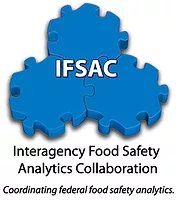New Codex Guidance for Managing Foodborne Illness Outbreaks

Valentinrussanov/E+ via Getty Images
The Codex Alimentarius Committee (CAC) recently drafted a new guidance for the management of microbiological foodborne illness outbreaks at the 52nd Session of the Committee on Food Hygiene. The guidance aims to establish local, national, and multiagency networks of preparedness to limit the scale of such outbreaks by standardizing communication, interpretations, and methodology. CAC emphasized the importance of transparent and cooperative information-sharing across international and industrial parties.
To effectively handle and mitigate foodborne illness outbreaks, the guidance describes ways in which authorities can create and maintain preparedness systems, including:
- International alert networks for better exchange of information
- Official networks between public health bodies, veterinary authorities, food control agencies, and laboratories at local and national levels
- Surveillance and monitoring systems
- Analytical methods
- Risk assessment, communication, and strategy.
The guidance recommends molecular typing methods, along with epidemiological data, as a superior form of analysis in detecting clusters of human cases and linking a case cluster to the food source. CAC advisors express that increased use of genetic methods can improve outbreak detection and source identification, by allowing experts to compare pathogen strains and narrow their investigations. The guidance specifies Pulsed-Field Gel Electrophoresis (PFGE), Whole Genome Sequencing (WGS), and Multilocus Sequence Typing (MLST) as examples of tools that can increase the rate of outbreak detection.
The guidance also emphasizes the importance of consistent decision-making, at local and national levels, when categorizing an outbreak as an incident, emergency, or crisis. The following are suggested factors for authorities to keep in mind when categorizing an outbreak and developing response plans:
- The number of patients and severity of illness
- The geographic spread of illness and whether or not it is ongoing
- Whether the hazard is known or unknown
- The source of contamination and history of the establishment
- Likely exposure and consumption patterns
- What actions must be taken to protect public health
- The nation’s capacity to quickly react to and contain the outbreak
- The distribution and availability of the food, including trade implications
- Whether or not the outbreak was intentional
- Consumer perception when correlating an outbreak with a product or food category.
The guidance is limited to microbiological hazards, as pathogens are the main cause of foodborne illness outbreaks. It is intended to facilitate a common understanding and a consistent approach to foodborne illness outbreaks, and to help officials manage situations with speed and order, especially in countries that are still developing their national food safety control systems. The guidance has been sent for adoption at the next CAC session later in 2022.
Other pertinent food safety items discussed at the 52nd Committee on Food Hygiene included proposed draft guidelines for controlling Shiga toxin-producing Escherichia coli (STEC) in raw beef, raw milk and raw milk cheeses, fresh leafy vegetables, and sprouts. Proposed draft guidelines for the safe use and reuse of water in food production were also considered.
In addition to the proposed draft guidelines, items of note at the Committee meeting included several nations’ interest in plans to develop food safety guidelines for traditional markets with the Global Alliance for Improved Nutrition (GAIN); a presentation of the Food and Agriculture Organization’s (FAO’s) recent work; and reports from the FAO/World Health Organization’s (WHO’s) Joint Expert Meeting on Microbiological Risk Assessment (JERMA), covering Listeria monocytogenes, STEC in meat and dairy, low-moisture foods, and water reuse in the fish and dairy industries.
The 53rd Committee on Food Hygiene is set to take place in November 2022.
Looking for quick answers on food safety topics?
Try Ask FSM, our new smart AI search tool.
Ask FSM →









